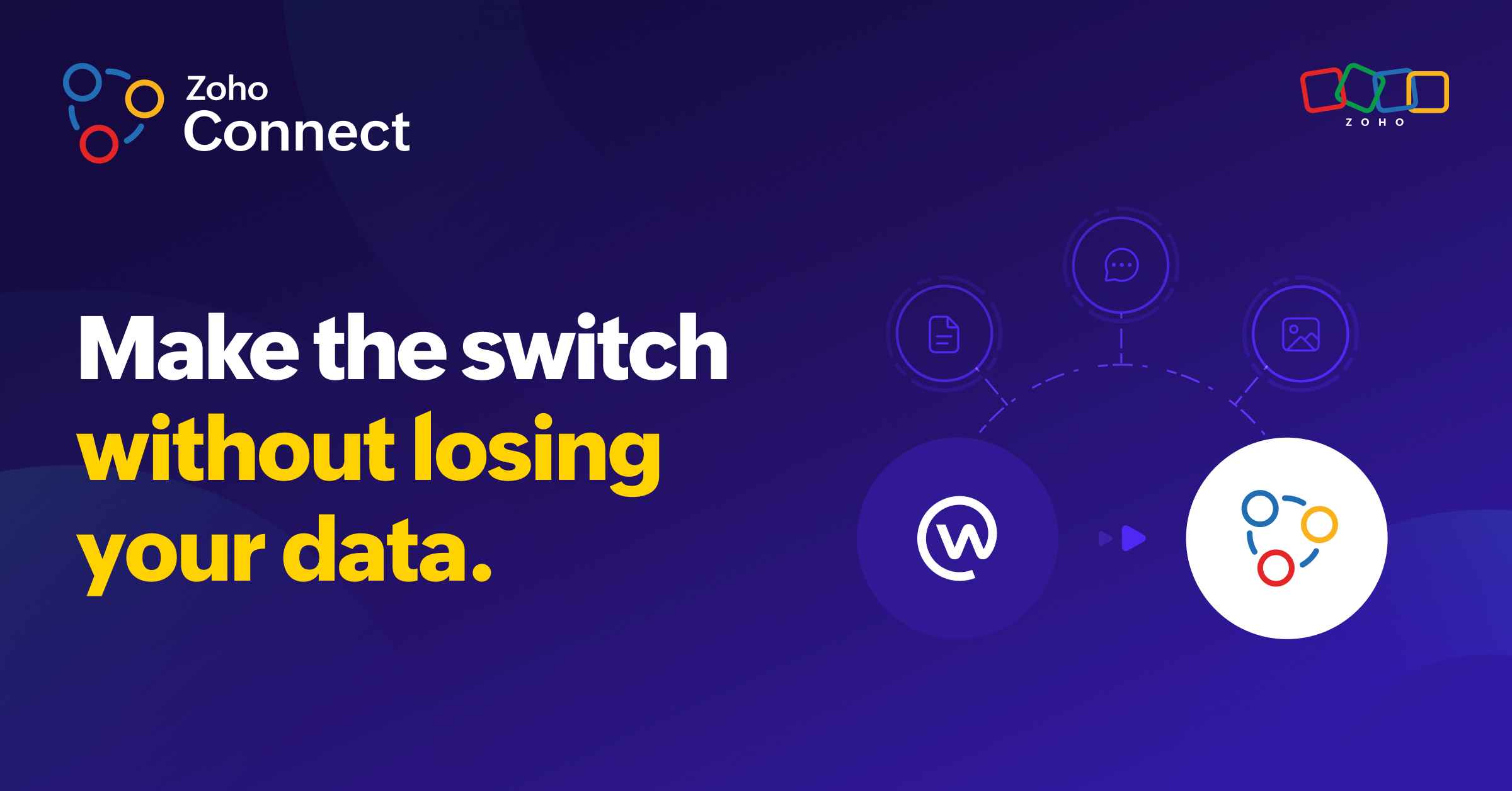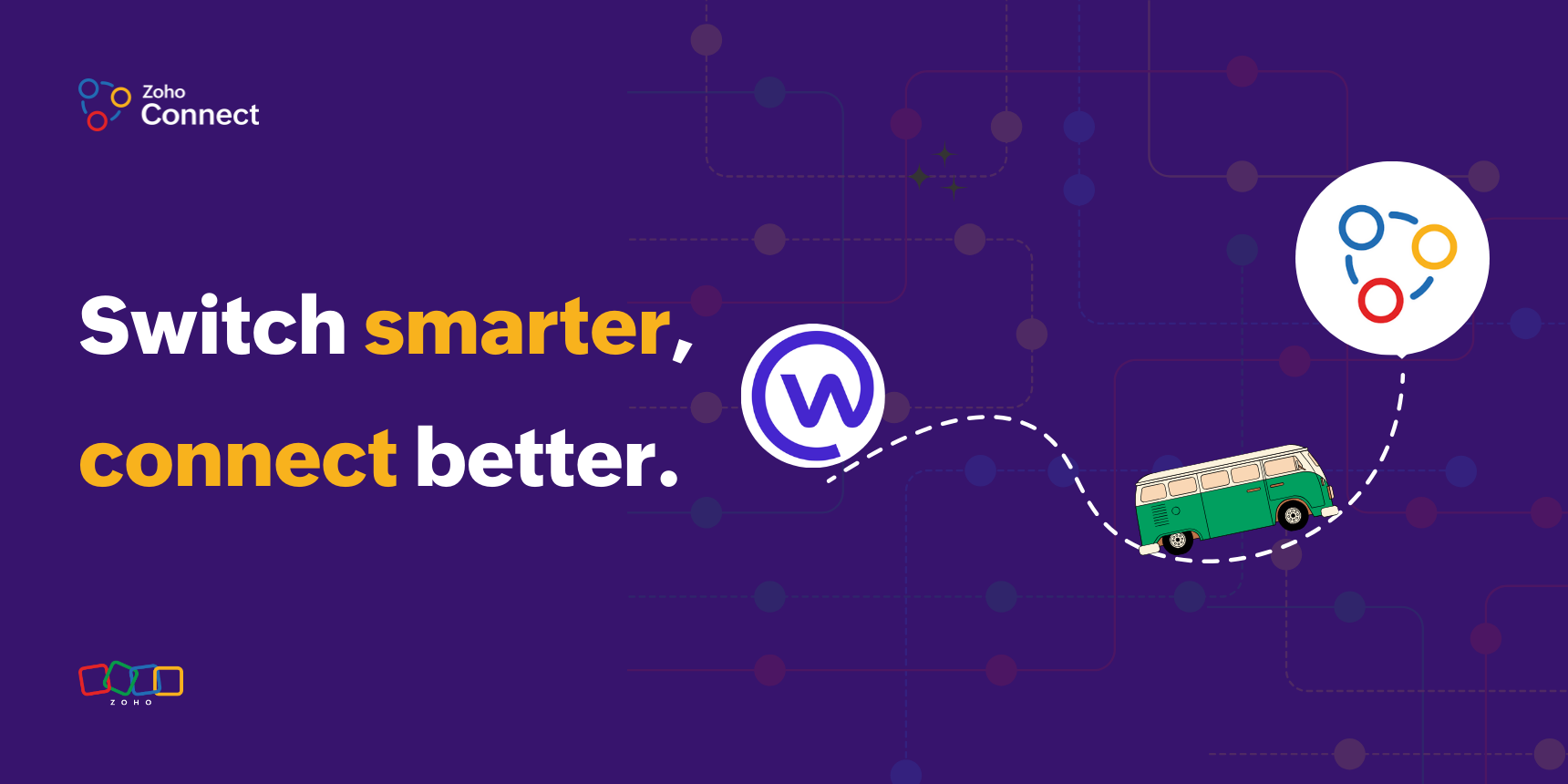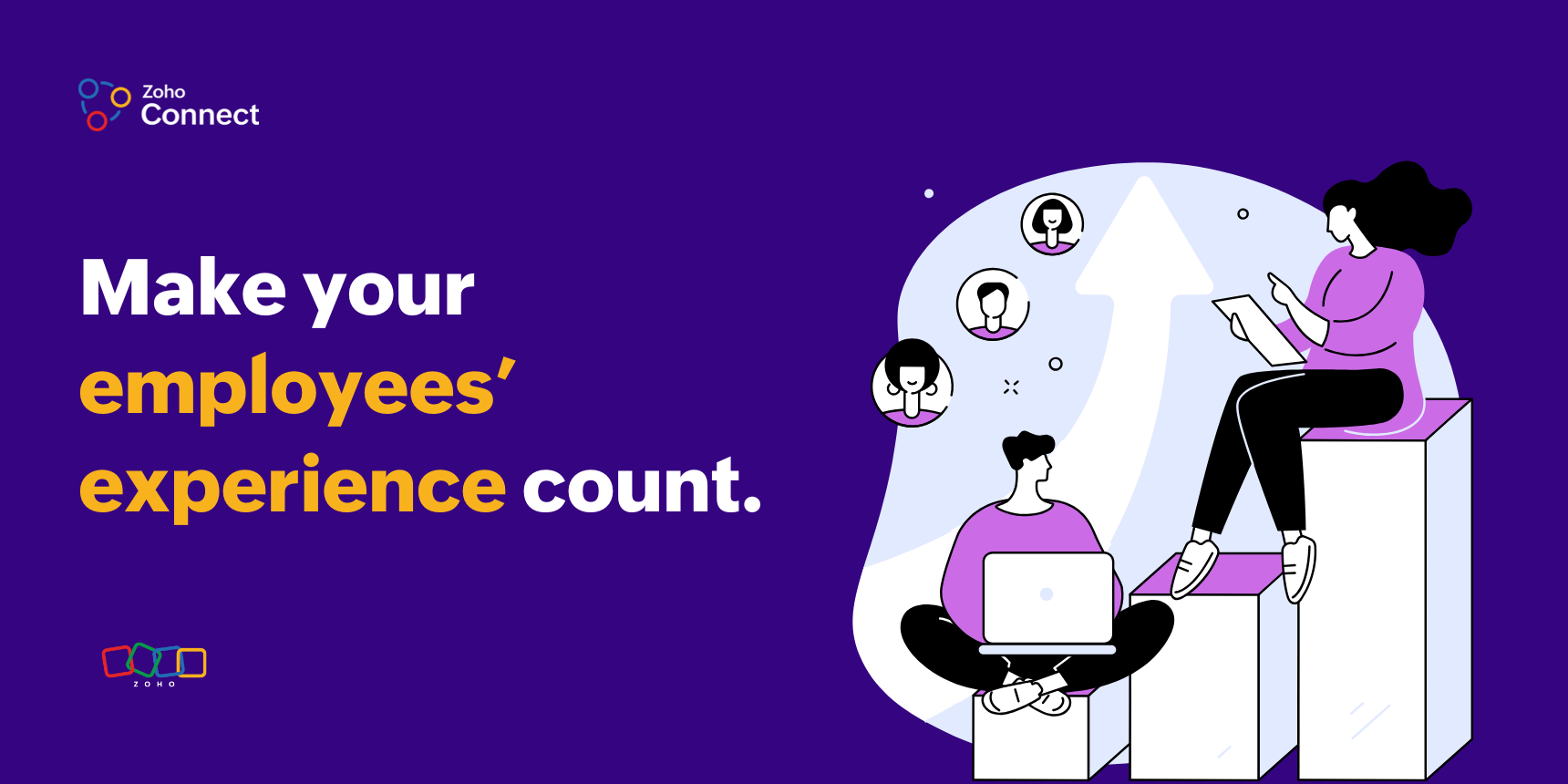- HOME
- More
- Employee Experience
- How to manage AI in employee experience platforms
How to manage AI in employee experience platforms
- Last Updated : February 6, 2025
- 80 Views
- 4 Min Read

AI is transforming the workplace, making tasks easier, improving communication, and creating a more connected work environment. When integrated into employee experience (EX) platforms like Connect, AI can provide personalized interactions, offer valuable insights, and help businesses create a more efficient and engaging workspace. However, to get the best results, it needs to be managed carefully to enhance employee satisfaction rather than disrupt the work experience.
Why AI-powered employee experience matters
The modern workplace thrives on agility, clarity, and engagement. AI-powered tools like Zia in Zoho Connect bring a new level of efficiency to the employee experience. It helps:
Enhance communication: Zia can generate content, correct grammatical errors, and adjust tone for better clarity and professionalism.
Provide real-time insights: Zia helps leaders track employee sentiment, allowing them to address concerns proactively.
Reduce information overload: Zia summarizes discussions, ensuring that employees stay informed without reading lengthy threads.
Boost virtual town hall engagement: Zia identifies trending topics and frequently mentioned themes, ensuring meaningful discussions.
By leveraging AI, organizations can build a more transparent, connected, and efficient workplace where employees feel supported and empowered. Zia isn’t just an assistant—it’s a workplace companion that helps employees work smarter, communicate effectively, and create a thriving work culture.
Best practices for managing AI in EX platforms
To get the best results from AI in employee experience platforms, businesses need a structured approach. Here are the top strategies to manage AI effectively.
1. Set clear goals for its implementation.
Before introducing AI, organizations should define clear objectives. Do you want to enhance employee engagement, streamline communication, or improve overall experience? Establishing these goals ensures that AI is deployed in a meaningful way, adding real value rather than becoming just another tool no one will use.
2. Keep it human-friendly.
AI should assist, not replace, human interactions. While chatbots and virtual assistants can handle repetitive queries, human support must still be available for more complex concerns. Employees should see AI as an enabler that simplifies their tasks rather than a replacement for personal connections.
3. Improve workplace communication.
AI-driven tools like Zia in Zoho Connect can summarize conversations, provide quick recaps, and ensure that employees stay informed without having to sift through long threads. This reduces information overload, making communication more efficient and engaging.
4. Monitor employee sentiment.
Understanding employee sentiment is crucial for maintaining a positive work environment. AI-powered sentiment analysis helps track engagement trends and employee feedback, allowing leaders to address concerns proactively. However, it’s essential to maintain ethical practices, ensuring privacy and transparency in sentiment tracking.
5. Be transparent about its usage.
Employees should always know how AI is used and what data it collects. Transparency builds trust, making employees more comfortable with AI-powered tools. Organizations should follow data protection laws, provide employees control over their data, and ensure that AI remains fair and unbiased.
6. Continuously improve it.
AI isn’t a "set it and forget it" solution. Regular updates based on employee feedback ensure its relevance and effectiveness. Businesses should monitor its performance and make necessary adjustments to improve accuracy and usability over time.
7. Educate your employees about its implementation.
Some employees may feel uncertain about AI's role or fear that it could replace their jobs entirely. Providing clear explanations and training can alleviate these concerns. When employees understand its purpose as a supportive tool, they're more likely to embrace it.
8. Make sure the integration is seamless.
For AI to be effective, it must integrate smoothly with existing workplace tools such as HR systems, communication platforms, and project management tools. Disruptions in workflows can reduce its efficiency and frustrate employees, so seamless implementation is key.
9. Leverage AI for better engagement in town halls.
One of the biggest challenges in large-scale discussions, like company-wide town halls, is keeping track of key points. AI can enhance engagement by automatically extracting frequently mentioned keywords and topics. This allows employees to revisit important themes from leadership talks. AI-powered insights can also provide a snapshot of overall sentiment and highlight trending concerns, giving leaders a real-time pulse on employee feedback.
10. Measure the impact on employee experience.
To maximize AI’s benefits, businesses should track key metrics such as employee engagement, productivity, and sentiment trends. Regular reviews help refine AI implementation and optimize its impact on the workplace.
Making AI work for your organization
Successfully integrating AI into employee experience platforms requires a balance between technology and human interaction. AI should empower employees by making their work easier, not more complicated. Here’s how organizations can ensure AI remains a positive force:
Empower employees with AI: Make sure it's used to assist employees in their daily tasks rather than replacing human effort.
Encourage employee feedback: Keep communication open about its use and any improvements you make to ensure that your employees feel heard.
Adapt it to your workplace's needs: AI tools should be tailored to fit the specific needs of an organization, and evolve with changing demands.
Final thoughts
AI is a game-changer in employee experience platforms like Zoho Connect, helping businesses create an engaging, efficient, and data-driven work environment. However, successful AI management requires a strategic approach that prioritizes transparency, human connection, and continuous improvement.
Zoho Connect’s AI-powered features, including Zia, help organizations streamline communication, improve engagement, and gain valuable insights into employee sentiment. By setting clear goals, keeping AI human-friendly, and integrating it effectively, businesses can harness AI’s potential to create a workplace where employees feel supported, informed, and empowered.
Are you ready to enhance your employee experience with AI-driven tools? Try Zoho Connect today and transform your workplace into a smarter, more connected environment.
.










